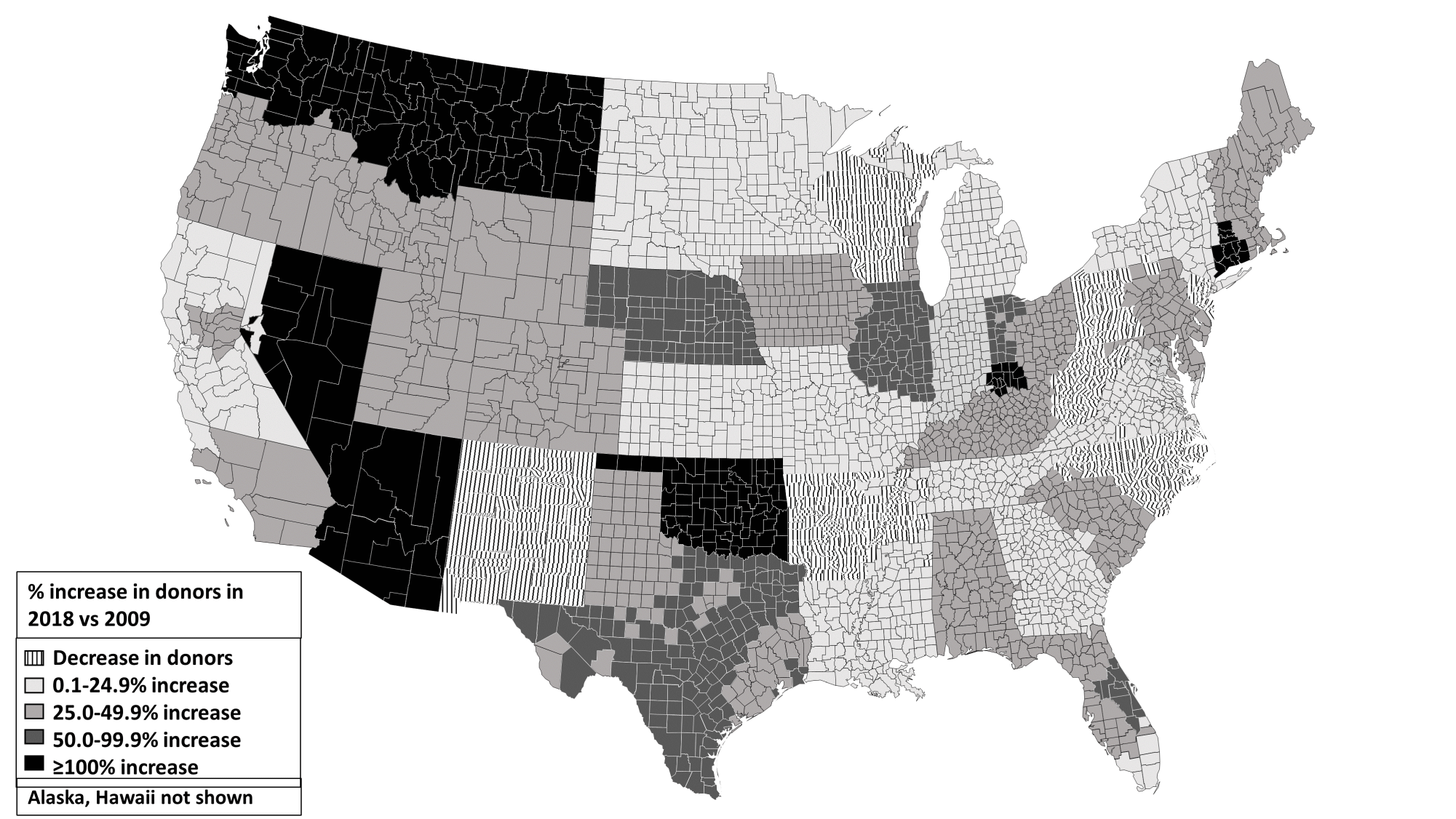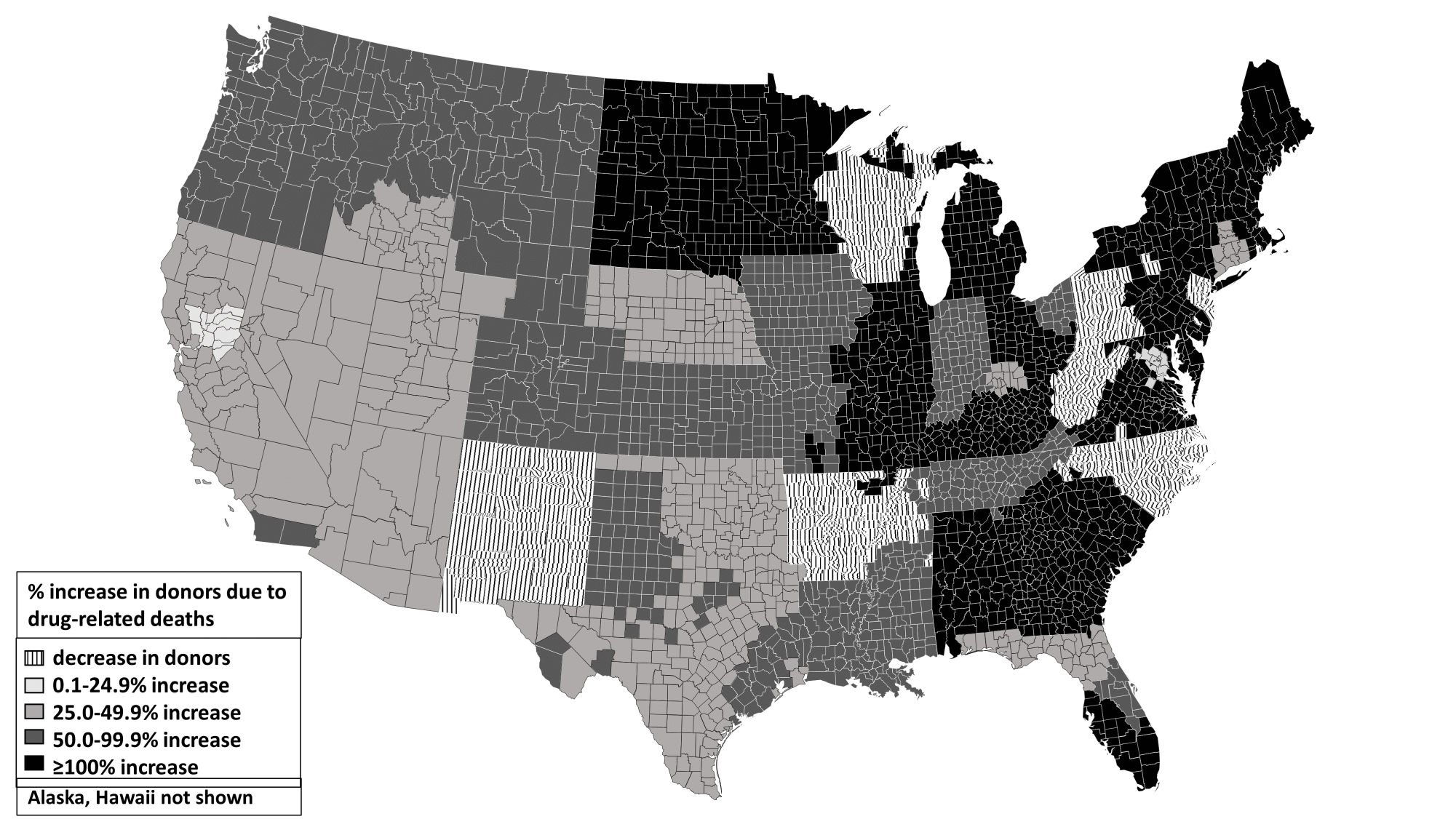Improvements in Organ Donation: Riding the Coattails of a National Tragedy
1Medicine, University of Miami, Miami, FL, 2Emory University, Atlanta, GA
Meeting: 2020 American Transplant Congress
Abstract number: C-246
Keywords: Donation
Session Information
Session Name: Poster Session C: Non-Organ Specific: Public Policy & Allocation
Session Type: Poster Session
Date: Saturday, May 30, 2020
Session Time: 3:15pm-4:00pm
 Presentation Time: 3:30pm-4:00pm
Presentation Time: 3:30pm-4:00pm
Location: Virtual
*Purpose: The US organ donation system has received attention from the highest levels of government. It has been debated whether increased donation is attributable solely to the opioid epidemic, or to broader OPO performance improvements.
*Methods: We evaluated OPTN data from 1/1/2009-12/31/2018 and hierarchically created four categories: 1) donor’s mechanism of death coded as “drug intoxication” by the OPO; or donor coded as another mechanism of death but his/her history noted 2) intravenous drug use, 3) non-intravenous drug use (e.g., snorting), or 4) no drug use. The first three categories were grouped as “drug-related.”
*Results: The total number of deceased donors in the US increased by 2,700 donors from 2009 to 2018. Aggregated together, and accounting for the decline in non-drug related deaths, 102% of increased number of donors in 2018, relative to 2009, were attributable to a drug-related death [Figure 1]. 50/58 OPOs had more deceased donors in 2018 compared to 2009, with six OPOs having greater than a 100% increase (doubling) in the number of donors in 2018 [Figure 2]. 23 OPOs had greater than 100% of their increased number of donors due to drug-related deaths due to concomitant declines in non-drug related death donors [Figure 3]. In contrast to the increase in donation from drug-related deaths, there was a 12.7% decrease in donors whose mechanism of death was “intracranial hemorrhage/stroke”, and a doubling in deaths from a “cardiovascular” mechanism, of which 50% were associated with concomitant intravenous or non-intravenous drug use.
*Conclusions: While there have been improvements in performance at some OPOs, based on these data it is indisputable that nationally the increased number of donors is almost wholly attributable to the drug epidemic, and reflects the byproduct of a national tragedy, rather than an improved system to be celebrated.
To cite this abstract in AMA style:
Goldberg D, Lynch R. Improvements in Organ Donation: Riding the Coattails of a National Tragedy [abstract]. Am J Transplant. 2020; 20 (suppl 3). https://atcmeetingabstracts.com/abstract/improvements-in-organ-donation-riding-the-coattails-of-a-national-tragedy/. Accessed January 6, 2026.« Back to 2020 American Transplant Congress



